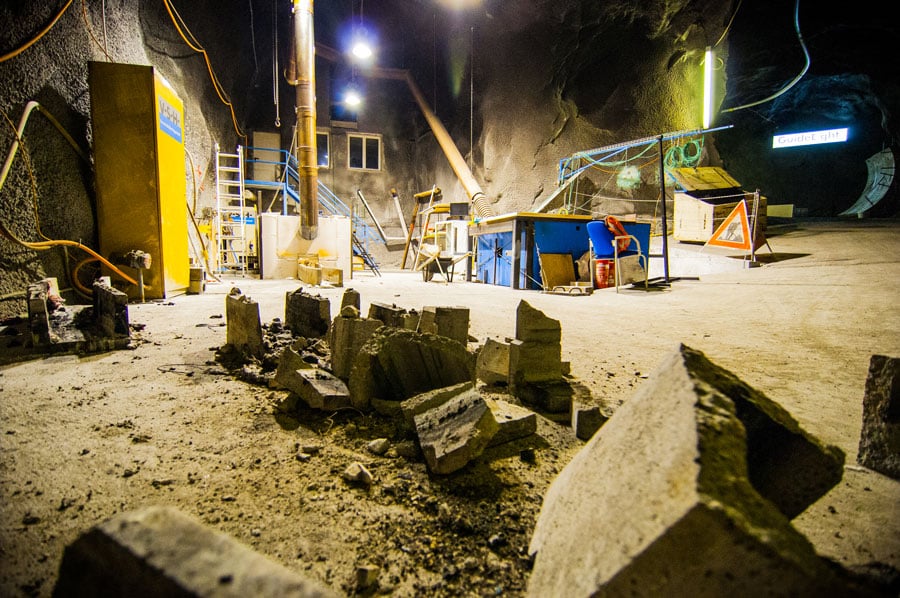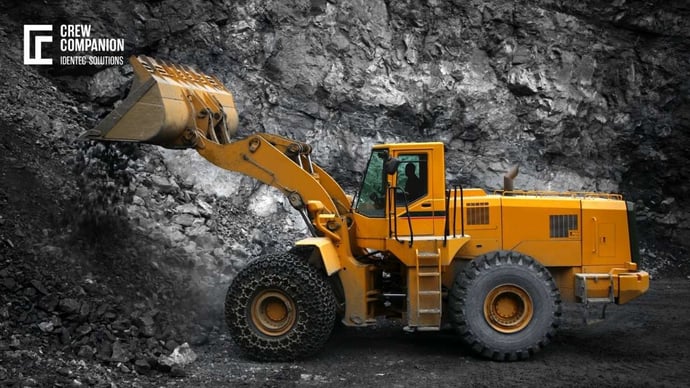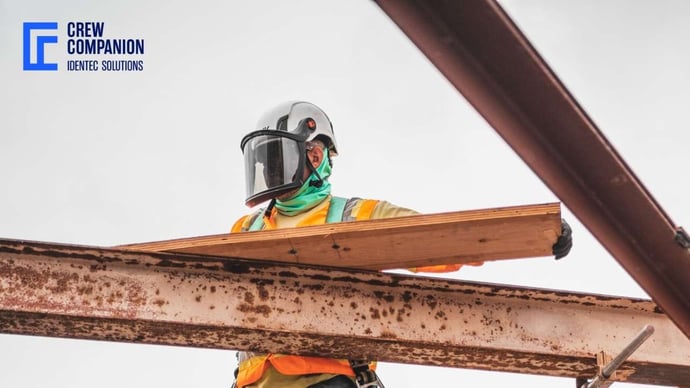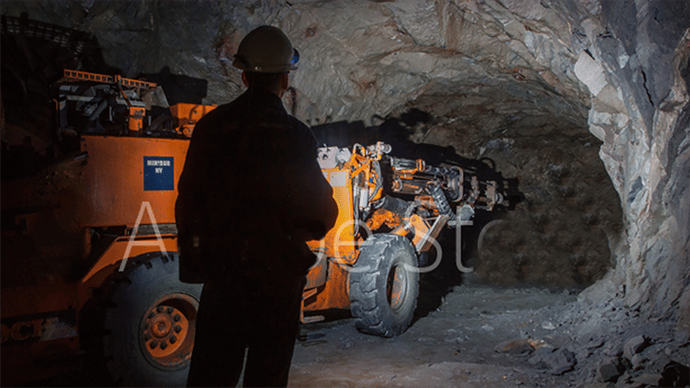Mining: Blast mitigation
| Written by Geir Nerbø
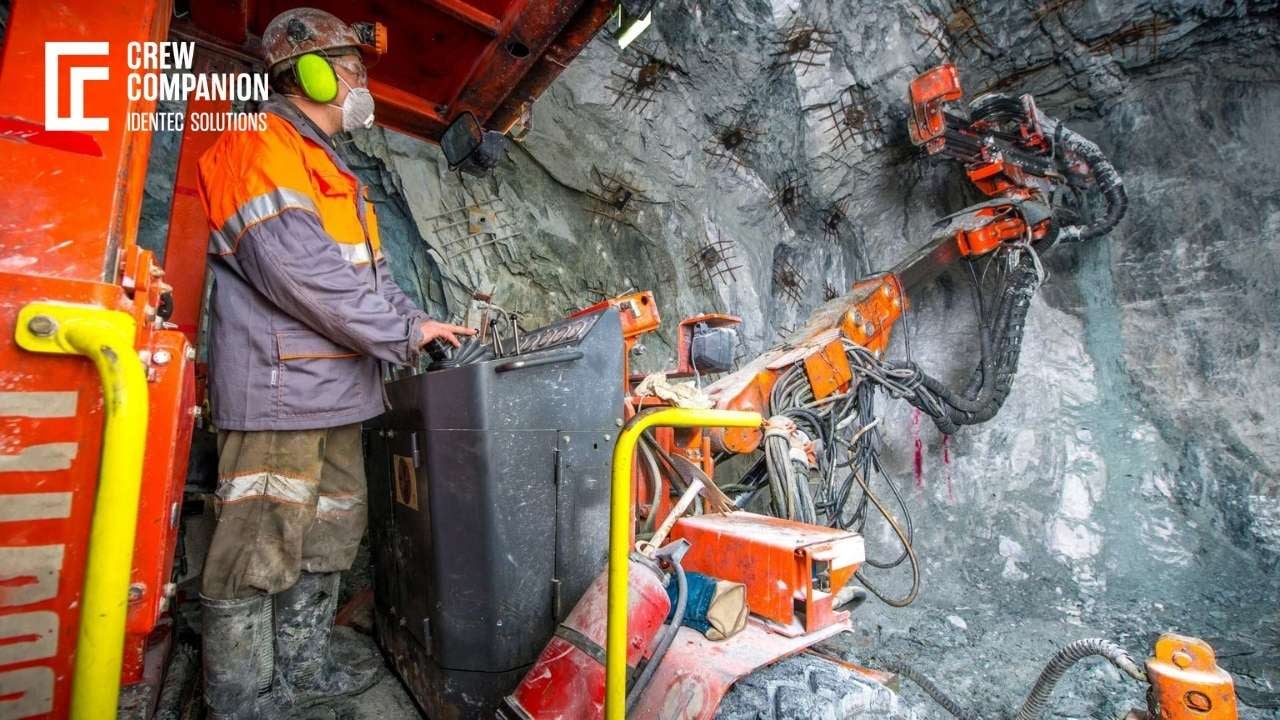
No video selected
Select a video type in the sidebar.
Blast mitigation is an essential concern for mining and tunnelling. A blast mitigation capability is achieved when all elements or compositions of an explosion and hazards are known. To help protect your facilities and assets, as well as people, from the impacts of blasts, use these practices:
Safety is an integral part of your design process. What makes a project/task risky? What can enhance operational safety in the mine/tunnel? (Safety Training: Don't waste your time with ineffective methods).
How to assess risks in blast mitigation?
In the high-stakes world of mining and tunnelling, where the extraction of valuable resources occurs deep beneath the Earth's surface, blast mitigation is of paramount concern. Effectively mitigating the risks associated with explosions is vital to safeguarding workers' lives and preserving the stability of mines. One crucial tool in this endeavour is conducting a thorough risk assessment, which provides critical insights into potential threats and guides the development of strategies to protect mining operations from the devastating impact of blasts.
To achieve blast mitigation capabilities, it is imperative to have a comprehensive understanding of all elements and compositions involved in an explosion, as well as the accompanying hazards. This knowledge forms the basis for designing effective measures to mitigate blasts. A systematic risk assessment process becomes essential in this regard, as it provides a structured approach to identify potential threats and evaluate the potential damage that explosions might cause.
A thorough risk assessment begins by identifying and analyzing the various potential threats that could trigger explosions in mining and tunnelling operations. These threats may include but are not limited to the accumulation of flammable gases, improper handling of explosives, equipment malfunctions, or natural factors such as geological instabilities. By carefully assessing these threats, mine operators and safety experts comprehensively understand the potential risks involved.
Once potential threats have been identified, a risk assessment allows for an evaluation of the potential damage that can result from blasts. This assessment considers factors such as the explosion's intensity and magnitude, the blast's proximity to critical infrastructure, and the vulnerability of mining structures and equipment. By quantifying and analyzing these factors, mine operators can make informed decisions regarding the best course of action to protect the stability of mines and ensure worker safety. In Australia, for mines and quarries that began operations on or after 1 July 2001, the limits for ground vibration at sensitive sites are as follows: ground vibration must not exceed 5 mm/s (PPV) for 95% of all blasts and 10 mm/s (PPV) for 100% of all blasts. (1)
Armed with the information gathered through a comprehensive risk assessment, mining and tunnelling experts can determine the most effective mitigation strategies to counter the identified threats and potential blast damage. These strategies may involve implementing enhanced ventilation systems to reduce the accumulation of flammable gases, enhancing safety protocols for handling explosives, implementing advanced monitoring technologies to detect equipment malfunctions, or reinforcing mine structures to withstand potential blast impact. Each mitigation measure is tailored to the specific risks identified during the assessment, maximizing their effectiveness.
By conducting thorough risk assessments, mining and tunnelling operations demonstrate their commitment to prioritizing safety and mitigating the potential risks associated with explosions. These assessments not only provide vital information for decision-making but also enable mine operators to meet regulatory requirements and adhere to industry best practices. Moreover, risk assessments facilitate continuous improvement by identifying areas where safety measures can be enhanced or modified to protect workers better and minimize potential damage to mining infrastructure.
Learn more about successful underground mining safety
Further reading: Mine Safety - Why digital management?
blast mitigation: Right materials
In the realm of mining and tunnel construction, the selection of appropriate materials and the utilization of cutting-edge technology play a pivotal role in ensuring safety and mitigating the impact of blasts. Understanding the behaviour of materials in the face of explosions is crucial, as certain materials possess the ability to withstand blast impacts more effectively than others. In this regard, extensive research on materials used in building mines and tunnels becomes imperative, as it allows for a comprehensive understanding of the consequences associated with different material choices and aids in developing strategies to enhance blast mitigation.
The technology and materials employed in creating and constructing mines and tunnels can significantly influence the impact of blasts. The behaviour of materials when subjected to explosive forces determines whether they exacerbate or reduce the effects of a blast. Materials with higher tensile strength, such as reinforced concrete, steel, or composite materials, have demonstrated better resistance to blast forces compared to traditional materials. Understanding the characteristics and properties of different materials is essential in order to choose the most appropriate ones for building mining structures and infrastructure.
In the pursuit of enhancing blast mitigation capabilities, research on materials used in mining and tunnel construction is of paramount importance. Scientists, engineers, and industry experts continually strive to expand their knowledge regarding how different materials interact with blast forces. This research entails investigating the response of various materials to explosive energy, studying blast effects on structural components, and evaluating the performance of different materials in real-world scenarios. By analyzing these findings, professionals can gain valuable insights into the behaviour of materials and make informed decisions when designing and constructing mining facilities.
The insights gained from material research provide a foundation for developing and implementing effective blast mitigation strategies. Armed with a deeper understanding of materials' behaviour, mining and tunnel construction professionals can make informed choices regarding the selection, placement, and reinforcement of materials to enhance blast resistance. For example, incorporating composite materials that possess high strength-to-weight ratios and superior blast resistance can be advantageous in critical areas. Additionally, advanced technologies such as blast-resistant coatings or innovative structural design approaches can help mitigate the effects of blasts and improve overall safety.
While it is crucial to prioritize blast resistance when selecting materials, it is equally important to consider practical aspects such as cost, availability, and construction feasibility. Finding a balance between safety and practicality is a key challenge in the mining and tunnel construction industry. Manufacturers and researchers continually strive to develop cost-effective materials that offer enhanced blast resistance without compromising other important factors. Collaboration between material experts, engineers, and industry stakeholders is essential in striking this balance and ensuring that the chosen materials meet both safety requirements and operational needs.
The role of advanced materials in blast mitigation cannot be overstated when it comes to ensuring the safety and longevity of mining and tunnelling operations. Through ongoing research and a deeper understanding of material behaviour in the face of explosions, the industry continues to make strides in enhancing blast resistance. By selecting materials with superior characteristics and employing innovative technologies, mining and tunnel construction professionals can significantly reduce the impact of blasts and create a safer working environment for miners. Continued collaboration and investment in research are vital to driving advancements in material science and further improving blast mitigation strategies in the mining sector.
Blast Mitigation Products
The intricacies and challenges associated with blast mitigation in mining necessitate using specialised products. These products are specifically designed to withstand the unique forces and demands of explosions, offering enhanced protection for infrastructure and personnel. From blast-resistant coatings to innovative structural reinforcements, a range of solutions exists to mitigate blast effects effectively. By employing such products, mining companies can significantly reduce the potential impact of blasts and ensure the safety of their operations.
Scientific studies and research play a vital role in validating the effectiveness of specialised blast mitigation products in the mining industry. Researchers and experts conduct rigorous testing to evaluate the performance of these products under various blast scenarios. These tests assess blast force resistance, material behaviour, and structural integrity. The findings of such research provide empirical evidence and data-driven insights, highlighting the effectiveness of specialised blast mitigation products in protecting mines and their assets. Scientific research is a critical reference point for mining companies when selecting and implementing blast mitigation solutions.
Market trends further underscore the significance of specialised blast mitigation products in the mining sector. The growing demand for improved safety and risk reduction has driven the development and availability of a wide range of blast mitigation solutions. Market leaders continually invest in research and development to create innovative products that meet the evolving needs of the industry. These solutions encompass blast-resistant materials, containment systems, blast curtains, and other tailored products designed to minimise the impact of explosions in mining environments. Market trends reflect the recognition within the industry that specialised blast mitigation products are indispensable for maintaining a secure and productive mining operation.
Selecting the most appropriate blast mitigation products requires careful consideration of specific needs and circumstances. Mining companies must evaluate factors such as blast intensity, infrastructure vulnerability, and potential risks to personnel. Consulting with blast mitigation experts and industry professionals is crucial in making informed decisions. By matching the right products to specific requirements, mining companies can optimise their blast mitigation efforts, ensuring the highest level of safety for their mines, assets, and workforce.
In the realm of mining, where the impact of blasts can be severe, the use of specialised blast mitigation products is crucial for safeguarding mines, protecting assets, and ensuring the well-being of workers. Supported by scientific research and driven by market trends, these products offer advanced protection against the forces unleashed by explosions. As the mining industry prioritises safety, the demand for effective blast mitigation solutions will persist. By investing in specialised blast mitigation products that are tailored to their unique needs, mining companies can reinforce their commitment to safety and create a secure environment for their operations to thrive.
Look for more with mining safety equipment!

Blast mitigation: Security Processes
Implementing robust security processes is crucial for protecting the workforce in the mining industry, where the risks associated with explosions are a constant concern. These processes encompass a range of measures designed to establish a safe perimeter, screen individuals, and conduct background checks. By incorporating effective security protocols, mining companies can proactively mitigate the risks posed by blasts and ensure the safety of their personnel. These security processes are supported by scientific research and industry practices and are vital in safeguarding miners in potentially hazardous environments.
Creating a safe perimeter around blast areas is a fundamental security process that helps protect the workforce from the direct impact of explosions. By limiting access to designated blast zones, mining companies can minimize the risk of injuries or fatalities resulting from blast-related incidents. This includes implementing robust access control measures, fencing, and clear signage to communicate the restricted areas effectively. The significance of establishing a safe perimeter is echoed by the United States Mine Safety and Health Administration (MSHA), which states, "Access to blasting areas must be controlled to ensure the safety of miners."
Effective screening and evacuation procedures enhance miners' safety. Screening individuals before entering blast areas helps identify any potential risks or hazards. This process can involve the use of metal detectors, explosive trace detection, or other screening technologies to ensure that individuals are not carrying prohibited items. Furthermore, establishing efficient evacuation procedures and conducting drills enables rapid and orderly evacuation in the event of an imminent blast. Such measures are advocated by industry bodies like the Canadian Centre for Occupational Health and Safety (CCOHS), emphasizing the importance of emergency preparedness in mining operations.
Background Checks: Strengthening Workforce Security: Conducting thorough background checks on both new employees and visitors can bolster workforce security and further mitigate the risks associated with explosions. Background checks involve verifying the credentials, employment history, and references of potential employees, as well as screening for any criminal records or other red flags. The use of background checks helps ensure that individuals with a history of unsafe or malicious behaviour are not granted access to sensitive areas within mining facilities. This proactive approach aligns with industry best practices in the mining sector, where safety is paramount. The Mining Association of Canada (MAC) highlights the importance of screening individuals for security reasons, emphasizing the need for due diligence.
The significance of security processes in blast mitigation is further substantiated by scientific research and industry endorsements. A study published in the International Journal of Mining Science and Technology emphasizes the importance of establishing secure perimeters and effective access control measures to safeguard mining personnel. The research underscores that access to blast areas must be strictly controlled to minimize the risks associated with explosions.
Market trends also reflect the growing recognition of security processes in the mining industry. Companies specializing in security solutions for the mining sector have emerged, offering technologies and services that enhance blast mitigation and workforce safety. This demonstrates the market's response to the increasing demand for comprehensive security measures in mining operations.
Miner visibility: Monitor where your people are.
How to learn and Train BLAST MITIGATION?
Training and education comprise critical elements of an effective blast mitigation strategy in mining and tunnelling. It is of immense importance that all concerned personnel, from miners to safety officers, be well accustomed to the respective safety procedures. Proper training will impart adequate knowledge and skills for the workers to identify hazards, respond in emergency situations, and upkeep best practices that need to be undergone for blast safety.
Such programs should include effective training on how to handle and store explosives, how to adorn personal protective equipment and other ways of safeguarding one from injuries during a blast. In addition, team coordination and communication during a blast event are very essential and need to be addressed through training.
All concerned personnel must undertake continuous education and refresh courses to remain abreast of the latest requirements and standards related to safety, new technologies, and changed regulations. Such practical training that incorporates drills and simulations will help shed light on theoretical knowledge and equip workers with the competence to handle real situations. Education can inaugurate a culture of safety within mining companies, improving the mitigation of accidents and hence safeguarding life and property.
An organizational safety culture engaged in it would encourage workers to contribute towards blast mitigation activities, among others, through reporting potential hazards and developing improved safety practices. Because of this fact, training and education gain a forefront position in mining companies in garnering a safer working environment in the context of heightening operational efficiency while ensuring compliance with industry regulations and standards (1).
FAQs
What is blast mitigation in mining, and why is it important?
Blast mitigation in mining refers to implementing strategies and measures to minimize the risks and potential damage caused by explosions in mining operations. It is essential because blasts can pose significant threats to the safety of miners, infrastructure stability, and the surrounding environment. By prioritizing blast mitigation, mining companies can protect the lives of their workforce, reduce the impact on infrastructure, and maintain sustainable operations.
What are some common blast mitigation techniques used in mining?
Several blast mitigation techniques are employed in mining operations, including:
- Controlling Blast Parameters: This involves carefully managing factors such as blast design, timing, and explosive selection to minimize the impact of explosions.
- Structural Reinforcement: Strengthening infrastructure, such as mine shafts and tunnels, with materials that possess higher blast resistance can mitigate the potential damage caused by blasts.
- Ventilation Systems: Implementing efficient ventilation systems helps disperse flammable gases, reduces the risk of explosions, and ensures a safer working environment.
- Seismic Monitoring: Utilizing advanced technologies to monitor and detect seismic activity in real-time enables early warnings and prompt evacuation if necessary.
How does technology contribute to blast mitigation in mining?
Technology plays a crucial role in blast mitigation in mining. Some key technological contributions include:
- Blast Monitoring and Analysis: Advanced monitoring systems, including sensors and data analytics, help track blast parameters, assess their impact, and identify areas for improvement in blast design and execution.
- Remote Blasting Systems: Remote-controlled or automated blasting systems allow for precise and controlled detonation, reducing human error and enhancing safety during blasting operations.
- Blast Simulation and Modeling: Computer simulations and modelling software enable mining engineers to predict and optimize blast outcomes, leading to improved blast design and reduced risks.
- Real-time Communication and Emergency Response: Integrated communication systems enable swift communication during blast events, facilitating efficient evacuation procedures and emergency response.
Overall, technology provides valuable tools and insights that aid in optimizing blast mitigation strategies, improving safety, and minimizing the potential risks associated with explosions in mining operations.
Takeaway
Blast mitigation in mining and tunnelling is a complex and critical endeavour. Undertaking comprehensive risk assessments provides invaluable insights into potential threats and the potential damage they may cause. By understanding the risks involved, mining operators can develop and implement tailored mitigation strategies that protect the stability of mines and safeguard the lives of workers. Through these proactive measures, the mining industry aims to maintain a culture of safety and ensure that underground operations remain secure and sustainable for the future.
Dive deeper into one of our core topics: Mining Safety
Glossary
The Canadian Centre for Occupational Health and Safety (CCOHS) - is a departmental corporation independent and listed under Schedule II of the Financial Administration Act, reporting to Parliament through the Minister of Labour. As Canada's leading national agency for promoting workplace health and safety, the focus at CCOHS is on the prevention of work-related injuries, illnesses and fatalities. Complementary work in this area is also carried out by provincial and territorial labour departments and workers' compensation boards.
Formed in 1978 under the Canadian Centre for Occupational Health and Safety Act (S.C., 1977–78, c. 29), CCOHS was born from the belief that all Canadians have "a fundamental right to a healthy and safe working environment." (3)
Sources:
(1) https://resources.vic.gov.au/legislation-and-regulations/guidelines-and-codes-of-practice/ground-vibration-and-airblast-limits
(2) https://www.resourcesregulator.nsw.gov.au/sites/default/files/documents/mdg-1031.pdf
(3) https://www.ccohs.ca/ccohs.html
Note: This article was updated on the 5th of July 2024

Author
Geir Nerbø, VP Sales Safe Mining
Geir has been an advocate for safety in the mining industry for a long time. Geir's background is from the Norwegian army, working as a technician within communication systems, special educated as a system engineer for the Norwegian Field Artillery, with responsibilities for the system calculating the ballistics data. He added a bachelor in Computer science (University of Agder) and started a career in sales, where the last 14 years he spent at IDENTEC SOLUTIONS.
